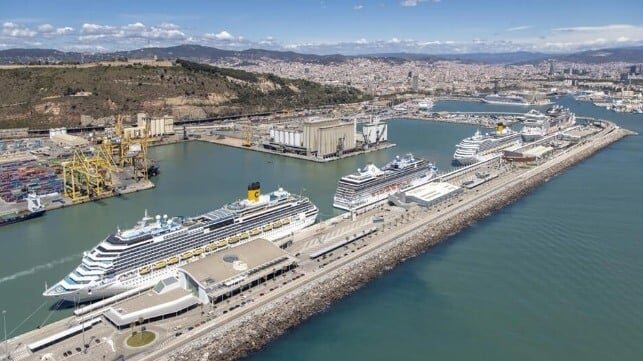The City of Barcelona Takes Action to Address Cruise Ship Overtourism
The city of Barcelona is taking action to address the growing complaints of overcrowding and overtourism that critics say is linked to the cruise ships. The city, claiming to be the largest cruise port in Europe, is unveiling plans to redevelop its seaport. This move is intended to increase the sustainability of the port while also reducing the number of tourists arriving at the popular destination.
Limiting Cruise Tourism Growth
After recording a 20 percent increase in the number of cruise ship passengers between 2018 and 2024, Barcelona now wants to put a limit on the growth of cruise tourism. The city recorded 3.65 million passengers last year, with a 21 percent increase in calls and a 20 percent increase in passengers in the first five months of 2025.
Barcelona Mayor Jaume Collboni, a member of the Catalan Socialist party and advocate for limiting cruise ship overtourism, is spearheading the push for the redevelopment of the terminals. This comes after the Barcelona City Council and the Port of Barcelona signed a new agreement designed to reduce the number of cruise ship terminals from seven to five by 2030, ultimately reducing Barcelona’s maximum cruise capacity by 16 percent.
Investment in Sustainable Infrastructure
Following the signing of the agreement, a total of €185 million ($215 million) will be invested in overhauling cruise terminals at the port and other infrastructural projects. The goal is to reorganize cruise activity to make it more sustainable.
The agreement involves demolishing terminals A, B, and C at the Adossat wharf and building a new terminal on the site of terminal C. The new terminal will have a capacity to serve 7,000 passengers and will prioritize home port cruises and small vessels. The port will have five cruise terminals, with four privately owned and one public.
The Port of Barcelona will also invest €50 million ($58 million) to overhaul the section of wharf that houses terminals A and B. This overhaul will facilitate the installation of onshore power supply systems to cut down on emissions.
Future Plans
Work on the projects is expected to begin next year, with completion slated for 2030 when Terminal C will be fully operational.
Despite the economic benefits of the cruise industry in Barcelona, the city recognizes the need for a more sustainable maritime tourism model. The city will also encourage cruise passengers to extend their stay onshore.

